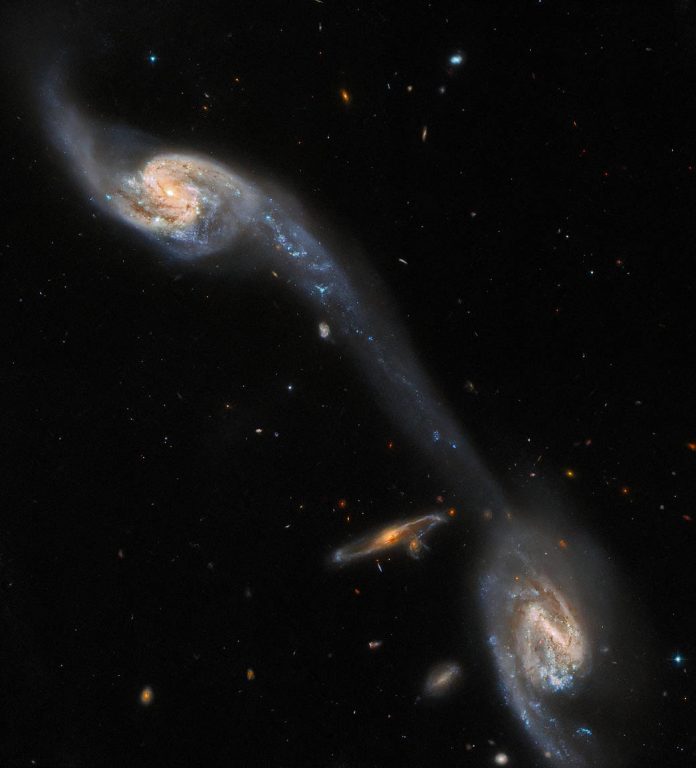
Two galaxies in the Galactic triplet Arp 248, also known as “Wild’s Triplet”, have been photographed by NASA’s Hubble Space Telescope
200 million light-years from Earth in the constellation Virgo, Hubble has provided images of two large spiral galaxies– which flank a smaller, unrelated background spiral galaxy – that appear connected by a luminous bridge.
Imaging Space Oddities
This elongated stream of stars and interstellar dust is known as a tidal tail and is formed by the mutual gravitational attraction of the two foreground galaxies.
This observation comes from a project which delves into two galleries of weird and wonderful galaxies: A Catalogue of Southern Peculiar Galaxies and Associations, compiled by astronomers Halton Arp and Barry Madore, and the Atlas of Peculiar Galaxies, compiled by Halton Arp. Each collection contains a menagerie of spectacularly peculiar galaxies, including interacting galaxies such as Arp 248, as well as one- or three-armed spiral galaxies, galaxies with shell-like structures, and a variety of other space oddities.
Wild’s Triplet and tidal tails
Wild’s triplet is a group of three small, interacting galaxies, named after the British-born and Australian-based Paul Wild (1923-2008), who studied the trio in the early 1950s.
Interacting galaxies are those whose gravitational fields affect each other. When concerning Wild’s Triplet, the gravity binding the three galaxies together has resulted in bright bridges that can be seen stretching between the two galaxies in the image. The bridge glows containing dust as well as starts – whilst forming an elongated region called a tidal tail.
Hubble’s two wing-like solar arrays collect energy from the Sun and convert it to electricity. Hubble has had three different sets of solar arrays since it was launched in 1990. According to NASA “Hubble’s capabilities have grown immensely in its over 30 years of operation. This is because new, cutting-edge scientific instruments have been added to the telescope over the course of five astronaut servicing missions. By replacing and upgrading aging parts, these servicing missions have greatly extended the telescope’s lifetime.”










